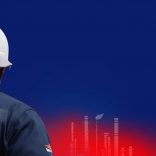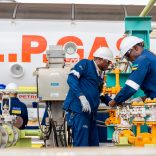Mozambique: IEA flags coal output risks from intense rainfall, climate change
Mozambique | Vale pulling out: This is the end of coal – By Joseph Hanlon

FILE PHOTO - Moaztize, Tete province. [File photo: Mota Engil]
Vale is pulling out of Tete as part of its climate emergency commitment to end coal production. Several announcements last week set out a complex planned withdrawal.
Vale announced on 20 January that to allow the Japanese company Mitsui to leave the project, buying its 15% of the Moatize coal mine and its 50% of the 900 km railway and port facilities Nacala Logistics Corridor, for $1. But it will take on Mitsui’s $2.5 bn debt. The new wholly owned company will only mine high quality coking coal, and hopes to mine 15 mn tonnes this year and 18 million tonnes next year. But the announcement stressed that Vale wants to disinvest from all coal production.
On 22 January Reuters reported that Vale has hired Barclays and Standard Chartered to sell the mine, railway and port, probably to China or India. China produces half the world’s steel and is anxious to replace Australian coal which has been stopped because of a diplomatic confrontation.
India is the second largest global importer of coal and an Indian ICVL company bought the Rio Tinto mine in Benga in 2014, mainly for coking coal. Another Indian company, Jindal, also has a coal mine in Tete.
To mine coking coal large amounts of cheaper thermal coal must be removed. When these mines opened, the thermal coal could be sold, but now it cannot and will be left in giant piles. Coking coal will have a market for perhaps a decade more.
Why is coking coal still needed?
Coking or metallurgical coal remains essential for steel making. A race is on to develop ways to replace it and production of coal free steel should start in the next five years. So there will remain a market for coking coal for another decade.
Steel-making dates back 2500 years in Anatolia and East Africa, and blast furnaces were developed in China and East Africa. China now produces half of the world’s steel. Tanzanian production was stopped by German colonisers who did not want competition with the growing German iron and steel production.
Initially wood was used, but China began using coal in the 11th century. Coal is converted to “coke” by heating it in low oxygen conditions to drive off water and unwanted chemicals. Coke and iron ore is put into a blast furnace to reduce iron ore (Fe2O3) into pig iron (2Fe). Coking coal enters the process again in the next step of converting iron to steel, when it provides both energy and carbon for the final alloy.
Under rapid development are methods to replace coking coal at both steps. Hydrogen is becoming an important non-carbon industrial fuel, because it can be produced from electricity, and renewable electricity sources are being rapidly development. Iron can be reduced to pig iron through “direct reduction” processes using hydrogen. Electric arc furnaces now produce 30% of the world’s steel (mainly from scrap) and do not need coal for energy, and are increasingly used from production of steel from pig iron, with other sources of the carbon than coking coal. It is predicted that within a decade a coking coal demand will be dropping significantly. But until then, Moatize should have a market for coking coal.
Background: https://leard.frontlineaction.org/coking-coal-steel-production-alternatives/ and https://www.letstalkaboutcoal.co.nz/future-of-coal/making-steel-without-coal/
Comment As the resource bubble bursts, where will the rents come from?
The “resource curse” occurs when global mining and gas companies share the surplus from resource extraction with a small local elite, and little reaches ordinary people. Economists refer to this as “rent” – income derived from ownership or control over a limited asset or resource. Such income is attained without any expenditure or effort on behalf of the resource holder.
Frelimo has developed an elite and a patronage network based on growing resource rents and the vision of a gas bonanza in coming years. But the bubble has burst. Reversing the climate emergency is putting a rapid end to coal, and is capping the promised growth of natural gas. Vale is abandoning Tete and no new mines will open. There will be no railway to Quelimane. Even if Total continues with its current natural gas project, ExxonMobil and others are unlikely to start their parts, because of war and low gas prices. Global heating is causing an energy shift faster than most people – including Frelimo – expected.
Gemstones, gold, graphite and heavy sands will continue, but they do not provide huge rents. Frelimo thinks that its “blue bag” of cash to hand out will be constantly refilled, but Vale is a harsh reminder that time is over. Some hard thinking is needed about how to manage the fall in resource rents.
By Joseph Hanlon












Leave a Reply
Be the First to Comment!
You must be logged in to post a comment.
You must be logged in to post a comment.